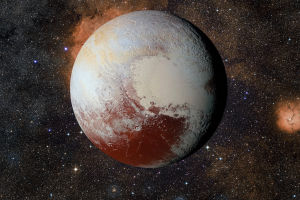With their vastness and boundless allure, the stars have forever ignited the flames of human curiosity and longing.
Since ancient times, humanity has harbored an insatiable desire to unravel the mysteries of the cosmos and comprehend the celestial realm they call home.
Over millennia of development and evolution, the dream of interstellar exploration has transcended the realm of fantasy to become a tangible reality, marking the commencement of humanity's grand cosmic odyssey.
Human fascination with the stars traces back to antiquity. Through meticulous observation and celestial mapping, early astronomers laid the foundations of the constellation system.
Ancients revered the stars as divine manifestations and believed in the intricate interplay between astrology and terrestrial affairs. However, it was not until the advent of scientific progress and technological prowess that humanity embarked on the actualization of interstellar voyages.
In the early 20th century, we witnessed a pivotal milestone in interstellar exploration with the inception of rocket technology. The birth of rocketry heralded the dawn of human interstellar exploration.
Subsequently, the U.S. Apollo program achieved another monumental feat by landing the first humans on the moon. Neil Armstrong's iconic footsteps on the lunar surface on July 20, 1969, marked a giant leap for humanity's cosmic aspirations.
Technological advancements have been instrumental in propelling interstellar exploration to unprecedented heights. Modern rocketry, characterized by the refinement of heavy-lift and reusable rocket technology, has vastly augmented the payload capacity of spacecraft, facilitating deeper forays into the cosmos.
Additionally, probe technology has played a pivotal role in unraveling the mysteries of our solar system. Probes dispatched to distant celestial bodies like Mars, Jupiter, and Saturn have provided invaluable insights into their surface features and atmospheric compositions.
Among the pioneering probes, Voyager 1 is a testament to human ingenuity and exploration. Launched in 1977, Voyager 1 voyaged beyond the confines of the solar system, becoming the first human-made object to reach interstellar space.
Its odyssey heralded a new chapter in humanity's interstellar exploration, unveiling the secrets of the cosmos beyond our solar neighborhood.
An indispensable facet of human interstellar exploration lies in the role of probes as harbingers of discovery. These unmanned emissaries have unveiled the enigmatic landscapes and atmospheric dynamics of celestial bodies, shedding light on the celestial mysteries that have eluded human comprehension for eons.
Notably, the U.S. "Background Radiometer" (COBE) probe's measurement of cosmic background radiation has provided compelling evidence supporting the Big Bang theory, reshaping our understanding of the universe's origins.
In 2012, the U.S. Curiosity rover achieved a historic milestone by landing on Mars, embarking on an unprecedented journey of surface exploration. Uncovering evidence of ancient riverbeds and lakes on the Martian terrain, Curiosity offered tantalizing clues hinting at the planet's watery past and the potential for extraterrestrial life.
The International Space Station (ISS) symbolizes human ingenuity and international collaboration in space exploration. Astronauts from diverse nations converge aboard the ISS to conduct scientific experiments and technological research, leveraging its microgravity environment to advance fields such as medicine, biology, and materials science.
Moreover, the ISS is a crucial testing ground for prolonged space habitation, offering invaluable insights for future deep space missions.
The saga of interstellar exploration epitomizes humanity's relentless quest for knowledge and transcendence. From ancient stargazers to modern spacefarers, our journey among the stars continues to inspire awe and wonder, forging new frontiers in the boundless expanse of the cosmos.


